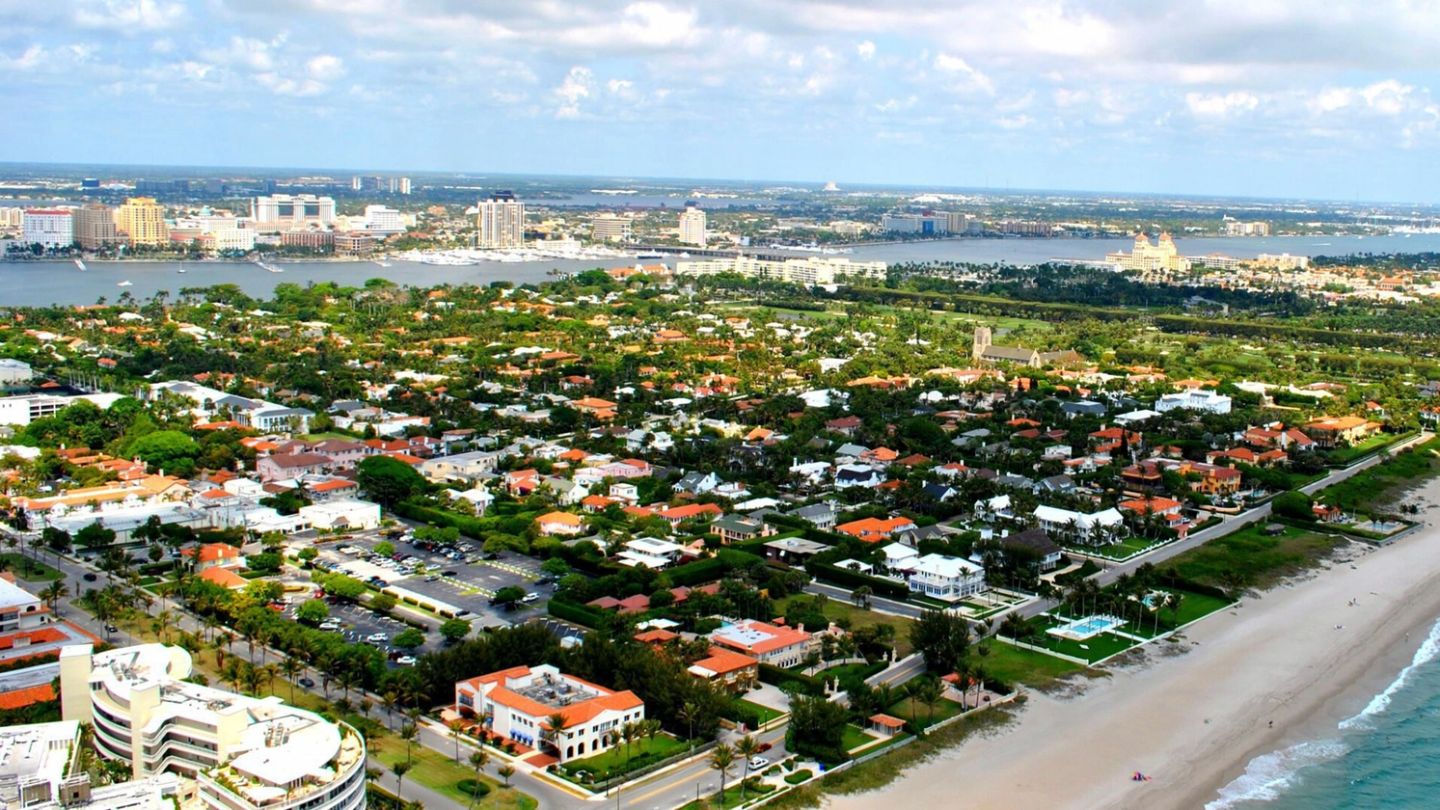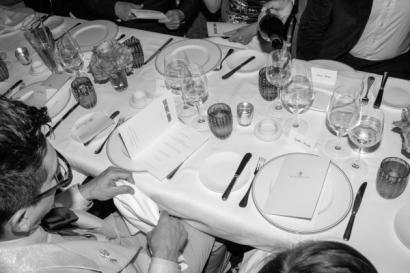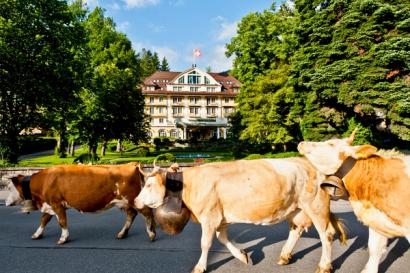

Words: Stuart Heritage
Imagine, for a moment, that you live in Palm Beach, Florida. You wake up one morning and realise that you’re out of milk. So you throw on a pair of shoes, step outside, take a deep breath of warm summer air and head straight to your local convenience shop.
But who do you see lingering by the tinned meat aisle? Oh no! It’s conservative pundit Ann Coulter! The last thing you want to do is get her started on the evils of liberalism again, so you take a sharp left and duck behind the magazine stand. But that’s no use either, because there’s Rush Limbaugh leafing through a periodical he clearly has no intention of purchasing.
You’re panicking now. You start to double back on yourself, but there’s Lou Dobbs at the till, trying to convince the shopkeeper that George Soros is an octopus. So you give up. You run outside as fast as you can, only to immediately clatter into a wall of black-clad security forces. This must mean that Donald Trump is in town again. What’s going on? Why are you surrounded by so many objectively awful people? “Some trip, huh?” a voice calls from behind you. You spin around and see the ghost of Jeffrey Epstein. And so you run into the sea and don’t stop until a shark eats you. After all, a person can only take so much.
This is Palm Beach in 2020; a hotbed of the very worst people alive. And it doesn’t stop there. Bernie Madoff had a home in Palm Beach until he was imprisoned. Conrad Black had a home in Palm Beach until he was imprisoned. Roger Ailes bought a home in Palm Beach, but he died before he could move in (or be imprisoned). Newsmax, the right-wing news network that makes Fox News look like CBeebies, has its headquarters in Palm Beach. Seemingly out of nowhere, this narrow little enclave (at some points only 500ft wide) with a widespread feral cat problem (the town is reportedly home to 500 of them) has become a haven for angry conservative millionaires. Somerset Maugham famously dubbed the French Riviera a sunny place for shady people. But Palm Beach is the swampy place for murky ones.
Ann Coulter. Credit: Gage Skidmore
Rush Limbaugh. Credit: Gage Skidmore
Why? Was it always like this? Well, no, not quite. But Palm Beach has always been an old, WASP-ish town keen to define itself by its wealth. Until recently, it was in a real boom cycle, but you can guarantee that sooner or later a bust will follow. To get to the bottom of this, it might be a good idea to have a quick history lesson.
Palm Beach’s first settlers arrived in the late 1800s, back when it was a knotted swampy mangrove tangle known as Lake Worth. In 1878, a Spanish ship by the name of Providencia ran aground not far from the coast, spilling its precious cargo of Cuban coconuts. As the coconuts washed ashore, the settlers clamoured to salvage and plant as many of these strange non-native plants as they could. Two years later a hotel, the Coconut Grove House, opened and the area became known by the more aspirational name of Palm Beach.
Then came Henry M Flagler, a retired oil man who essentially built Florida by himself. His Florida East Coast Railway promoted freedom of movement. His Model Land Company encouraged agriculture. His chain of luxury Flagler System hotels drew tourists to the area.
Beneficiaries of the Gilded Age — a period of rapid technological advancement and economic growth in the US at the turn of the 20th century — started to build their winter residences around this unlikely paradise. Palm Beach was up and running.
Not that these homes sprang up of their own accord. News of Palm Beach’s growth spread like wildfire, drawing workers from all across the country. The white labourers were welcomed, told where they could buy a tent and pointed towards a temporary colony. The black workers, meanwhile, were banished to a sprawling second colony that came to be known as the Styx. The Styx quickly became a shanty town, at one point apparently housing 2,000 people. When the construction was over, Flagler tried to move the workers on to the more salubrious neighbourhood of West Palm Beach. Those who remained were forced out when a disastrous fire decimated the community. Workers at the time believed that the fire was started by Flagler’s men
The Henry M Flagler House in Palm Beach. Credit: Rich Andrews
But by that stage Palm Beach’s rise was astronomical. In the years after the First World War, car production increased, driving the wealthy down to Florida in unprecedented numbers. In 1924, the state constitution was amended to prohibit personal income tax. In the first half of the 1920s, the population of Palm Beach County quadrupled. The railway was so overwhelmed that there wasn’t time to perform basic maintenance. The city’s value increased fivefold, and rampant speculation caused property prices to triple.
And then came the crash. A hurricane hit in 1926, scaring off potential buyers. Then came another, in 1928 — the 160mph, Okeechobee hurricane — which caused several million dollar’s worth of damage and killed around 2,500 people in Florida alone. And then, a year later, the US Stock Exchange crashed. Businesses closed. The railway went bankrupt. Hotels shut up shop. Even the wild bacchanals of the town’s annual fancy dress Cocoanut Ball were suspended for 20 years. The total value of Palm Beach real estate fell from $89 million to just $18 million. Recovery wouldn’t begin in earnest until after the, Second World War.
But the green shoots were buffeted by something Palm Beach has always had in spades: incredible wealth. The area’s big, expensive private clubs — among them The Bath and Tennis Club, The Everglades Club and Bradley’s Beach Club — managed to weather the storm of the Depression. Renowned businessman Joe Kennedy, sensing a bargain, bought a home in Palm Beach in 1933. And then, of course, there was Marjorie Merriweather Post. Cereal heir, richest woman in America and owner of the world’s largest yacht, Post was by all accounts a fearsome woman. She bought Marie Antoinette’s earrings, hired cooks to feed her own cooks, and rigged her bed to ring with bells if her husband ever decided to cheat on her in it.
But the jewel in Post’s crown was Mar-a-Lago. Built in the boom days, Mara-Lago had 58 bedrooms, 33 bathrooms, three bomb shelters and a breathtaking, nine-metre pietra dura dining table made in Florence that was inlaid with precious stones and took 17 craftsmen a full year to build.
The Everglades Club. Credit: Ebyabe
Post died in 1973, and willed Mar-a-Lago to the US government and, perhaps enchanted by her time with the Kennedys as her neighbours, declared that it should be used as a “Winter White House” for sitting presidents. But Nixon had his own preferred home in Key Biscayne, and the opulence of the place sat strangely with Jimmy Carter’s humble roots. And so, unwilling to take on the annual million-dollar maintenance costs, the government returned the gilded Mar-a-Lago to the Post Foundation in the early 1980s.
And then, in 1982, Donald Trump arrived. In Trump: The Art of the Deal, the incumbent US president revealed how he came to purchase Mar-a-Lago. “I put in a bid of $15m, and it was promptly rejected”, he wrote. “Finally, in late 1985, I put in a cash offer of $5m, plus another $3m for the furnishings in the house… They accepted my offer, and we closed one month later.” It sounds like a steal, but it doesn’t tell the complete picture. When the Post Foundation rejected Trump’s offer, he retaliated with spite, buying a beachfront lot in front of the house for $2m and threatening to build a view-obscuring towerblock so forcefully, that Mar-a-Lago’s market value plummeted.
Donald Trump and Jair Bolsonaro at Mar-a-Lago. Credit: Alan Santos
“I’ve been told that the furnishings in Mar-a-Lago alone are worth more than I paid for the house,” Trump claimed. And those furnishings? He almost immediately sold them at auction, including Post’s beloved pietra dura table.
Trump changed Palm Beach, and he changed it for a quick buck. By the 1990s, his empire was falling apart. His casinos were going bust, he was in the middle of an expensive divorce and he reportedly owed billions of dollars. To assuage his bankers, he suggested breaking up Mar-a-Lago into a series of mini-mansions, which he would make available for purchase. Palm Beach residents reacted with fury and banned him. The day after his ruling, he issued a chillingly petulant threat to the Palm Beach Daily News: “I gave [the town] an opportunity, and they blew it. Now, I’m going to get everything I’m entitled to.” He sued the town for $50 million.
His Plan B was a work of almost impressive spite. Taking the Palm Beach’s most notable establishments — its private clubs — head on, he signalled his intention to transform Mar-a-Lago into a club of his own. The town hit him with a long list of restrictions, so he retaliated with a lawsuit claiming that he was being discriminated against for allowing black and Jewish members to join. The town caved, and thus began a running battle between the billionaire bully and the WASP-y, old money blue bloods of the town.
A working dinner at Mar-a-Lago. Credit: Alan Santos
In the mid 1990s he claimed the town was deliberately flying planes over Mara-Lago, and sued for $75m, then dropped the lawsuit in exchange for a parcel of scrubland, which he transformed into Trump International Golf Club. In 2006, he erected an 80-foot flagpole on the grounds, then sued Palm Beach for $25m when it objected. In 2015 he filed another lawsuit over plane noise, this time for $100 million. That suit he dropped on 15th November 2016, because he was elected as American president a week earlier. His new role meant that there would be a federal no-fly zone around the area when he was in town. Miraculously, Trump won again.
And now that’s he’s president (for a little longer at least), Palm Beach has become part of the political establishment. Foreign prime ministers have been entertained at Mar-a-Lago. Decisions to bomb Syria have taken place at Mara-Lago. When, at the tail end of last year, Trump tried to publicly deflect from his impeachment hearing for the first time, he did it in Palm Beach. “You want to see a bird graveyard, go under a windmill someday,” he told a crowd of young conservatives. “You will see more dead birds than you’ve ever seen in your life.” Of course, it should be noted that Mar-a-Lago really is the Winter White House now. The swamp away from the swamp.
It’s fitting that a town like Palm Beach — built off the back of shameless property, huckstering — will forever be known as the playground of the world’s most powerful property huckster. It’s also why those aggressively right-wing pundits live here, having fallen into President Trump’s orbit. But when he finally leaves office, they, will too, and search for a more influential carcass to pick. Where will that leave Palm Beach? Gutted, empty and full of feral cats. Another bust in a long history of busts.
Donald Trump Jr.: Inside the bizarre life of America’s first son…
Become a Gentleman’s Journal member. Find out more here.


